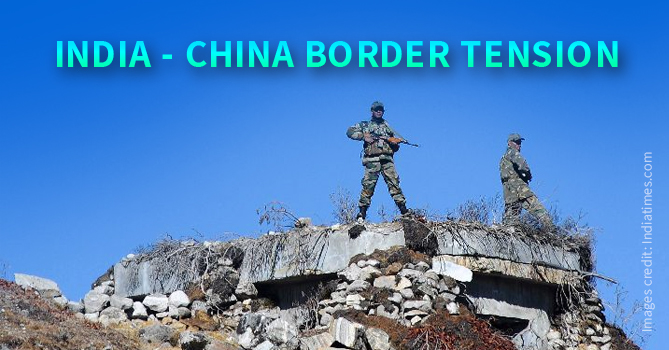The power sector forms an integral part of the backbone of a developing nation. The successful functioning of the power sector depends on the consistent supply of electrical power through its network of high and low tension transmission lines, which in fact are the arteries and veins of the power sector. Consistent transmission depends on strategically placed transformers, capacitors and a host of other electrical equipment. So, it is evident that the electrical industry forms the core of the power sector of any country. In India, the electrical industry is vast, with an estimated value of Rs. 1.3 lakh crore (US$ 24 billion), as of 2012-2013. The Indian electrical industry is multifaceted, manufacturing a diverse range of products which range from high technology equipment to low technology electrical components. The electrical industry is also an employment intensive sector, providing direct employment to 1.5 million people, and indirect employment to about five million people. It is natural that such a vast industry has sub-sectors. Sub-sectors mostly fall in the unorganized segment and are responsible for the production of a varied range of electrical equipment.
Depending on the equipment manufactured, the electrical industry of our country can be broadly classified into two categories, namely, the generation equipment category, responsible for the manufacturing of boilers, turbines and generators (comprising 28% of the manufacturing sector), and the transmission and distribution (T&D) category, responsible for the manufacture of transformers, transmission cables, switchgears, capacitors, etc., (comprising 72% of the manufacturing sector).
MoU between India and China to set up Power Equipment Service Centres in India
Prime Minister Manmohan Singh’s recent visit to China covered many issues, including a Memorandum of Understanding (MoU) that was signed between India and China, regarding establishment of Chinese Power Equipment Service Centers (PESCs). The initial official accordance was ratified in black and white by the China’s National Energy Administration and the Power Ministry of India. However, the Government’s move to set up Chinese PESCs in India hasn’t been welcomed by the domicile manufacturing entities. The domestic manufactures are apprehensive of stiff competition from the Chinese quarters, mainly because Chinese components are cheaper compared with the those of the domestic manufactures. The distresses of the Indian manufacturers are evident, because under the circumstances, they may even stand to lose a substantial stake in the market share.
The import scenario of the electrical equipment sector and the domination of China in the said import sector
In 2012-13, the export figure for the electrical industry of our country stood at USD 4.9 billion. Based on the Government’s extrapolation in the 10th, 11th and 12th Five Year Plans, the electrical equipment manufacturing sectors of our country have made substantial investitures to bolster their production limits in both the generation and T&D categories. However, such enhanced capacities currently stand under-availed, as a consequence of heavy import of electrical equipment and depreciation in the power sector, which in turn resulted in a noticeable fall in the domestic demand. Such adverse factors are severely affecting the domestic electrical equipment manufacturing sector, inclusive of both the top-of-the-line manufacturers and the smaller units. It is to be mentioned here that the T&D category witnessed a negative growth of 7.8%, for the first time in a decade and the manufacturers under the T&D category are functioning at approximately 70% of their actual capacity. On the other hand, the import growth curve has witnessed a compounded annual growth rate (CAGR) of 24.67% in the last 7 years (2005-06 to 2012-13), touching the figure of INR 64,674 (USD 11.9 billion), in 2012-13.
China’s stake in the India’s import of electrical equipment has grown in quantum leaps, (CAGR 45.46%), for the above-mentioned period, and now stands at INR 29,054 crore (USD 5.3 billion) in 2012–13. This intimidating growth of the imports in the electrical equipment sector has successfully bagged 38.26% of the electrical equipment market of our country. Moreover, Chinese manufactures enjoy the Chinese Government subsidy of 17% on their exports. Added to these are the policies of the Chinese Government of low income tax, subsidies at various levels, etc., which ultimately enables them to market their products with a 24% pricing privilege, which in turn increases China’s global competitive edge. Besides, the Chinese policies of allocating flexible credits, while exporting to foreign countries, is further accelerating the imports from China. All the above-mentioned factors combined together are only defeating the cause of the domestic manufacturers in their own home market. The Free Trade Agreements (FTAs) will further affect the domestic manufactures, as the FTAs are not designed to protect their interest.
China likely to set up PESCs in India
As a result of the Indo-China pact, as initiated by PM Manmohan Singh, Chinese electrical equipment manufacturers like the Shanghai Electric Group Company and the Dongfang Electric Corporation are likely to open up PESCs in India, which in fact may be the harbinger for the Chinese to establish electrical equipment manufacturing facilities, right here, in our country, as projected by some officials of the Government. To boost the production capacities of the domestic manufactures, the Indian Government imposes a tax of 21% on the import of overseas electrical equipment. In contrast to the interests of the domestic manufacturers, the power generation authorities of the Government are welcoming this move on the part of China, as evident from the comment of a related official, “Service centers would be a good beginning”. Evidently, they want the importers, including China, to set up electrical equipment manufacturing facilities in India.
China, however, is more interested in importing electrical equipment to India because that is more profitable than the setting up of PESCs followed by manufacturing facilities, an issue the Indian Government seems to be pushing. Further confirmation comes from the fact that 100% FDI is conceded by the Indian Government, in the electrical equipment manufacturing sector. Right now, power plants using Chinese equipment have to send them to China in case of a malfunction. The above-mentioned official commented, “This scenario is not desirable, given the rising electricity demand”. He further added, “Such centers in India would help in timely services to plant owners, help optimize maintenance and operation costs”. Underling the fact that the Chinese manufactures have a sizeable customer base in India, Ashok Khurana, Director General, Association of Power Producers, welcomed the Chinese proposition of opening up PESCs in India, as evident from his statement, “This would be a natural progression. A strong presence of Chinese companies augurs good for the domestic power sector as it increases local competition”.
Conclusion
The domestic capacity of power generation is already under-availed and the electrical equipment manufacturing sector is heavily back-loaded with the import practices, which proves to be a serious drawback in many aspects. While Mr. Unnikrishnan, managing director of the domestic electrical equipment manufacturer Thermax, expresses his doubts regarding China investing substantially in the electrical equipment sector, I beg to differ. Once China establishes the PESCs in our country, followed by manufacturing units, the import practices will fall to a certain extent, because now the power generation sector will have one of the biggest importing nations at their doorstep. On the other hand, backed by the giant power-generating corporate like the Reliance Power Limited, signing multi-billion dollar contract with the Chinese manufacturers for electrical components compounded with their pricing advantage, China will capture a lion’s share of the electrical equipment market in absolutely no time. The brunt of the consequences will fall on the bottom line domestic manufacturers, while the top-of-the-line domestic manufacturers like Bharat Heavy Electricals Limited (BHEL) will be less affected. Even other existing foreign companies, like the French Alstom, with manufacturing and servicing facilities in India, will also be considerably marginalized, once China acquires a foothold in the domestic electrical equipment market.




